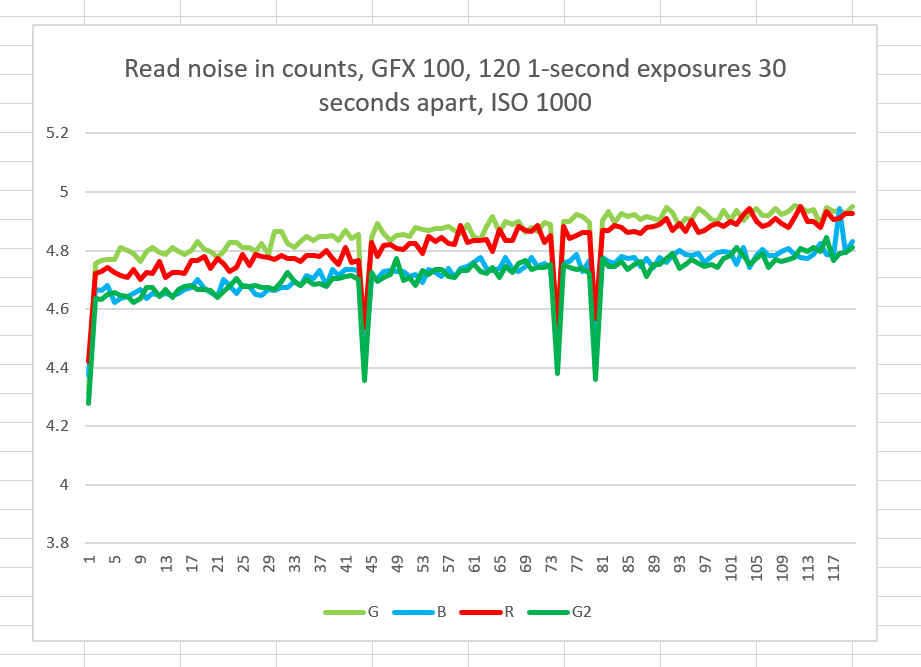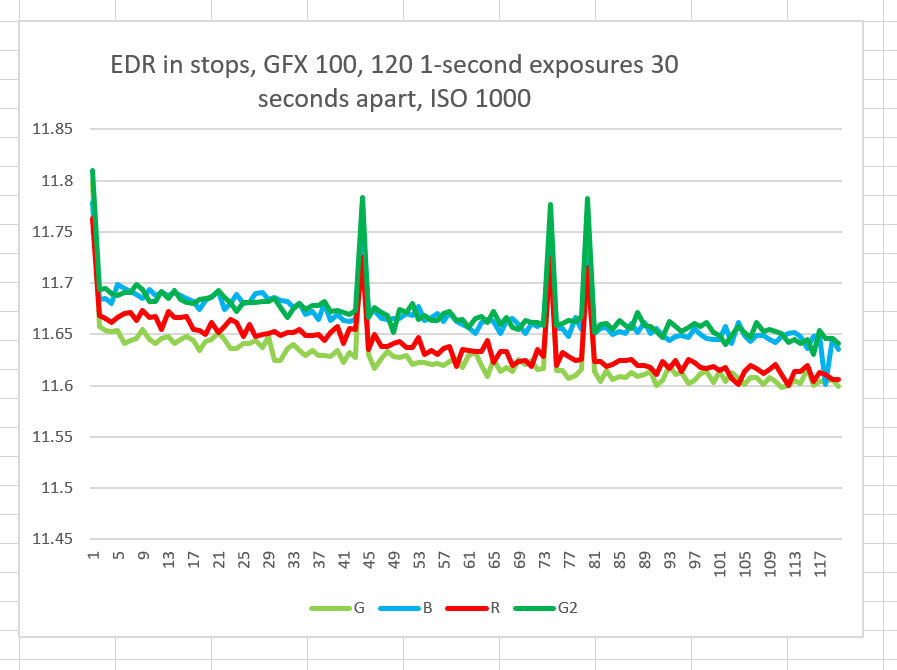This is one in a series of posts on the Fujifilm GFX 100. You should be able to find all the posts about that camera in the Category List on the right sidebar, below the Articles widget. There’s a drop-down menu there that you can use to get to all the posts in this series; just look for “GFX 100”.
I received a request to look at the effects of self-heating of the Fujifilm GFX 100 on the read noise. In the past, with MILCs without IBIS have had very little self-heating effects, but some Sony’s with IBIS have had a bit more, probably due to less-effective heat-sinking because of the isolation between the sensor and the chassis.
Using the internal intervalometer, I made 120 1-second exposures 30 seconds apart, with the LCD enabled. The camera blanks the display for part of each 30-second cycle, and may not be scanning the sensor during that time. However, at the end of an hour, the camera had gone through most of one of the installed batteries, and the body was quite warm when I picked it up, indicating that there was considerable self-heating. Fuji does not report camera temperature in the EXIF data, unlike Sony, which in this case is a shame.
I measured the rms read noise in counts (or Data Numbers, if you prefer) for a 600×600 patch offset just enough from the center of the frame so that it avoided the center column.
There is a very small gradual increase in the noise, amounting to about 0.2 counts. This is nothing to worry about.
The flip side of noise is engineering dynamic range (EDR) at a SNR of 0. Here’s what that looks like:
About a 0.05 stop change. Again, this is benign.
What caused the four outliers? I have no idea.


Thanks for running this test, Jim!
It looks like self heating isn’t an issue for this camera. I do have some observations:
– You measured an EDR of about 11.7, while Bill Claff measured a PDR of 12.3; isn’t PDR supposed to be lower than EDR? It would hope that the manufacturing process unit-to-unit variations would not explain this difference
– If the sensor would not be active during part of the 30 second cycle, you could improve the test by taking fewer shots
– What would be worse: using the monitor or EVF, photography mode or video mode?
– It doesn’t look like equilibrium was reached after one hour
While these results are encouraging for this particular, expensive, $10,000 camera , they don’t tell us to what to expect for other cameras. IMHO, whenever dynamic range and other image quality attributes of cameras with Live View are stated, it should be mentioned under what conditions: initially at room temperature when the camera has just been switched on. And ideally, if it makes enough of a difference, what happens to those attributes over time when the camera self heats. And if you really want to go all-out, what happens at ambient temperatures other than room temperature.
Look at the ISO settings for both tests.
Agreed on the EDR/PDR issue. What about the others?
The effects are so small I don’t want to spend any more time quantifying them or tweaking the test procedure.
I totally agree with you. Thanks again for doing the testing!